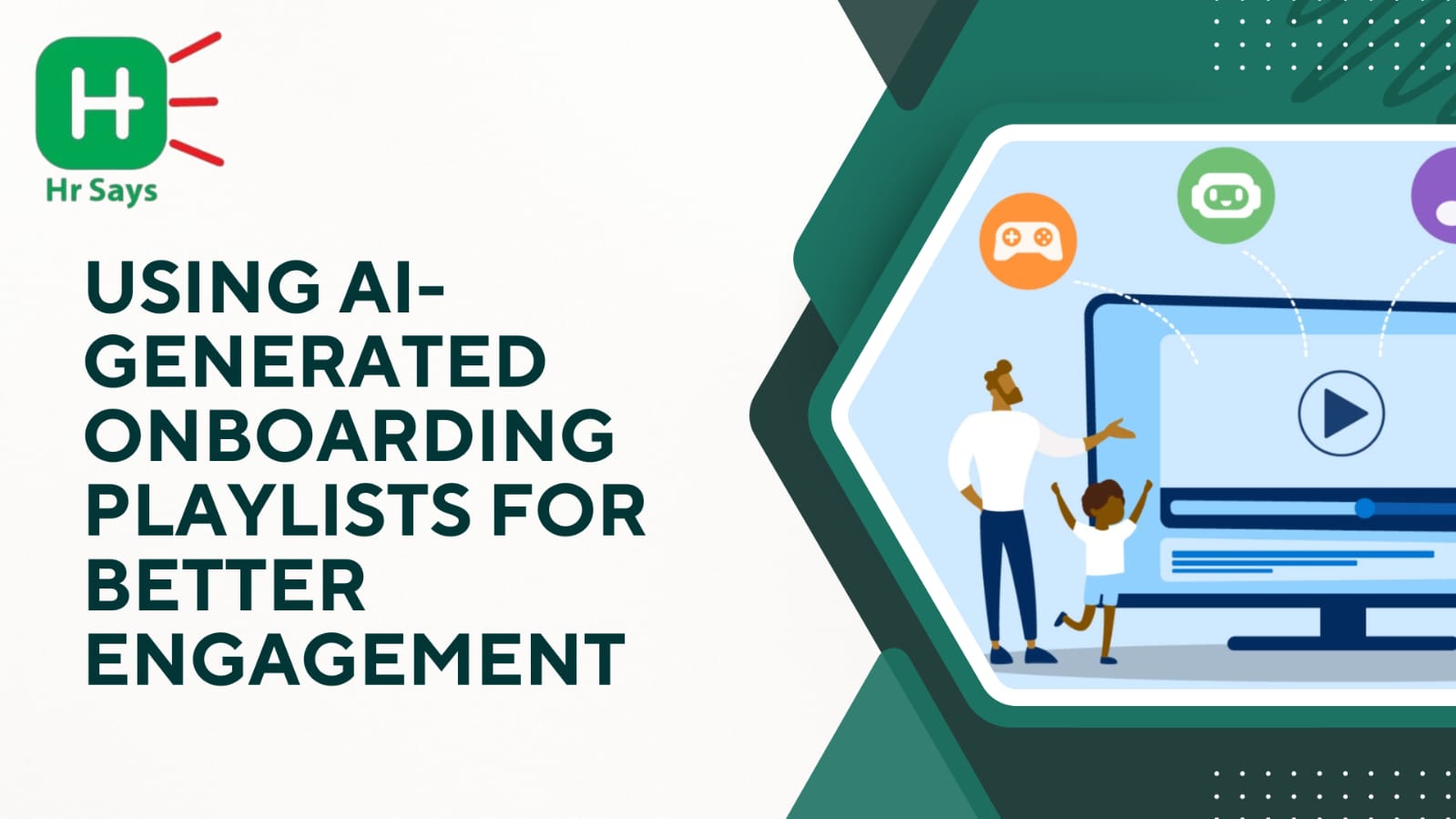Why do most onboarding programs feel like ticking boxes? The paperwork. The stiff welcome slides. The long calls you won’t remember. It’s routine. It’s functional. But is it effective?
Somewhere between day one and week two, people start zoning out. Now, a new layer is being added—one that listens, adapts, and quietly builds a connection.
What Is an AI-Generated Onboarding Playlist?
It’s not just a list of training videos. It’s a personalized flow of micro-learning, intros, culture pieces, and skill-building—all selected based on your role, interests, and goals.
Think Spotify but work ready software.
Rather than one-size-fits-all, the playlist is based on:
● Type of role (design, tech, sales etc.)
● Learning style (video, reading, short audio)
● Previous experience
● Language preferences
● Company goals or current priorities
What Makes This Different?
Traditional onboarding is often passive. The same PDFs. The same awkward welcome call. Engagement? Rare. Retention? Low.
But with playlists:
● Learning is broken into bite-sized content
● Delivered gradually, not dumped in one go
● Feels less like training, more like discovery
● Allows self-paced absorption of material
● Can mix culture, communication, and practical tasks in a single flow
It’s quiet. Unassuming. But different.
What’s Driving This Shift?
Not every company wants to sound like an app. But with remote and hybrid work becoming the
norm, human connection is harder to create. AI isn’t solving the problem. But it is organizing
the noise.
By mapping skills, roles, and personality insights, AI helps shape a better flow. No two playlists
are exactly the same. That matters.
A Few Examples of What May Appear in a Playlist
● A 2-minute voice note from your manager
● A short guide to company lingo
● A walkthrough of how your team sets goals
● Micro-lessons on communication norms
● Quizzes on values or DEI
● Timed nudges to check in with a buddy
Not groundbreaking. But useful. And often, useful is enough.
Is This the Future of Onboarding?
Not entirely. Humans still matter. Playlists can’t replace conversations, laughter, or questions
asked in the hallway.
But they can remove the friction. Make things feel smoother. Give people space to adjust
without pressure.
Companies are trying. Some will get it right. Others will treat it like just another tech trick.
Conclusion
Engagement starts before the first meeting ends. AI-generated playlists won’t fix culture. But
they can shape the tone. Done well, they offer new employees something rare—a quiet,
thoughtful start.
And sometimes, that’s more powerful than we think.

 The onboarding experience has long felt cold and mechanical. But what if it could be reshaped—made personal without feeling forced? AI-generated playlists may be quietly rewriting how new employees connect, learn, and engage.
The onboarding experience has long felt cold and mechanical. But what if it could be reshaped—made personal without feeling forced? AI-generated playlists may be quietly rewriting how new employees connect, learn, and engage.












.jpeg)
.jpeg)

.jpeg)

.jpeg)


.jpeg)

.jpeg)

.jpeg)


